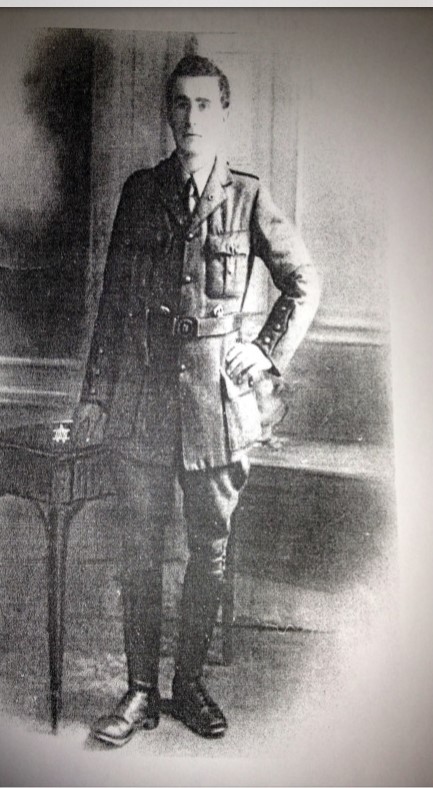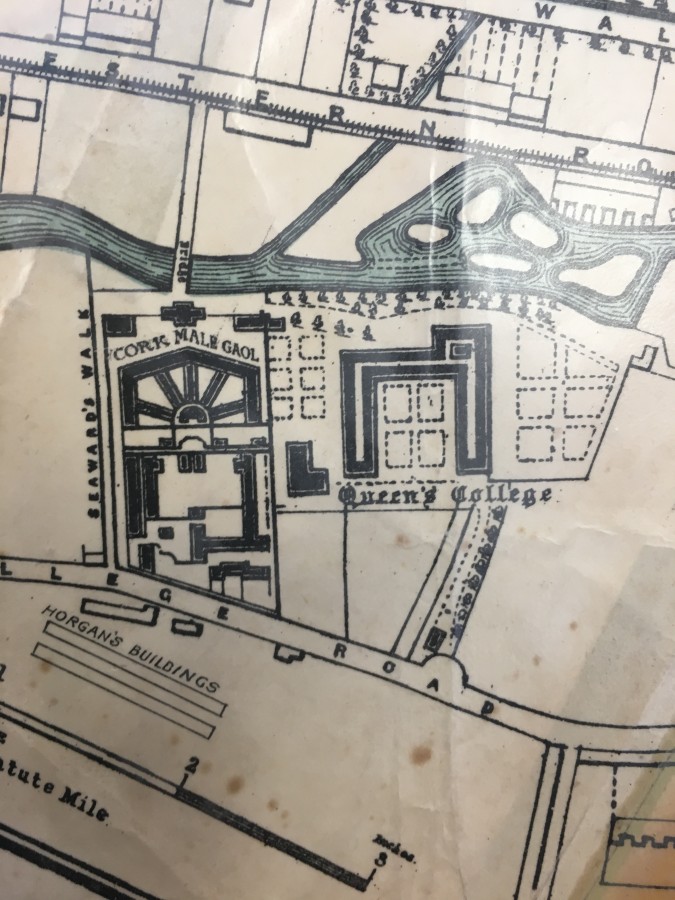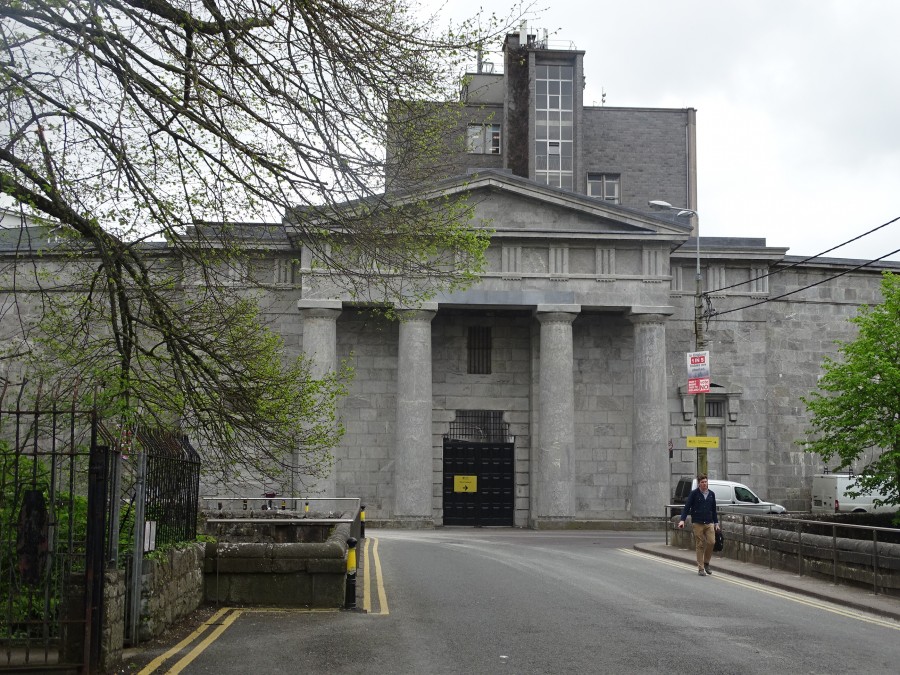Kieran’s Our City, Our Town Article,
Cork Independent, 8 November 2018
Stories from 1918: The McNeilus Prison Break
One hundred years ago this week, news reports abounded in speculation to how one of the most famous escapes from an Irish and Cork prison occurred. On 11 November 1918 Donegal-born Donnacha McNeilus, in an elaborate plan involving dozens of men on the outside, was spirited to freedom.
The only aspect remaining of the Cork County Gaol and later renamed Cork Male Prison is its architecturally perfect Doric entrance portico. It was built in 1818 off Western Road under the direction of the Inspector General of Prisons. The winner of the contract for building the “House of Correction” or the chosen architects were George and Richard Pain Brothers. It had a central block from which three, three-storey buildings stuck out from as well as two detached wings. Embedded into the prison’s architecture were ideas of surveillance, separation and silence and these were essential to the reform programme for prisoners. The centre block had also the Governor’s residence on the ground floor, a chapel for Catholics and Protestants on the second floor and an infirmary on the third floor. The radiating buildings provided a panoptical gaze and consisted of 78 cells with washing rooms in each area. Work rooms were located on the ground floor and a detached limestone church could be seen between the earlier gaol and the “house”. The gaol was constructed to keep people in and was heavily guarded.
Fast forward to 4 November 1918 five armed RIC men, under the command of Head Constable Clarke, raided the lodgings of a Cork Volunteer named Donnchadh McNeilus (a Donegal man) with a view to his arrest. He was staying in the house of a man named Denis Kelleher at 28 Leitrim Street, Cork. McNeilus resisted arrest; he was armed with a revolver and, in the struggle, he shot and badly wounded Head Constable Clarke. McNeilus was eventually overpowered and taken prisoner to the then Cork Male Prison, formerly with the name Cork County Gaol.
Commandant of the 2nd Battalion of the Cork No.1 Brigade Michael Murphy in a statement (document no WS1547) for the Bureau of Military History in 1956 detailed part of the reason for the escape plan. if Constable Clarke died MacNeilus would almost certainly be hanged, so the Cork Brigade officers took steps to bring about his rescue as soon as possible. Visits to McNeilus in gaol were made by various Volunteers and, in the course of these visits, a note was passed to him telling him to be prepared for anything’. On the afternoon of 11 November 1918, a number of Volunteers, armed with revolvers, began their prison break mission. The names of these Volunteers included Joe Murphy, Martin Donovan, Chris McSweeney, Paddy Healy, Frank McCarthy, Jerome Donovan and Paddy Varian. Frank McCarthy was dressed in clerical clothes to allay suspicion.
In 1918, Frank Hynes, Captain No.1 in the Cork Brigade at that time, was also involved in the planning of the escape plan. His witness statement in the Bureau of Military History in Collin Barracks in Dublin (document no WS446) details the actual escape plan itself. There was no limit to visitors going to see a prisoner. Inside the big wooden gate was a waiting room. Between the wooden gate and a big iron gate was a type of a hall wide enough for a lorry to pass through both gates; outside the iron gate a path led up a hill to the cells. Joe Murphy and Jerome Donovan called to see McNeilus and ten minutes later two more called. They were in the waiting room with a guard who had the keys of both gates. The plan entailed when the two visitors who were with the prisoner, when their visit was coming to an end, they were to knock out the guard. The two volunteers in the waiting room were to calculate the end of the visit at the time, knock out their man and open the gates.
A fifth man was placed outside the wooden gate to direct McNeilus round by the jail wall and onto the cross roads at Gaol Cross with Western Road where a motor car waited. On Gaol Bridge was a sixth man and his duty was to hold up any soldiers who might come to go into the jail. As luck would have it, two soldiers came along in a horse and tumbling cart. He held them up, got them down from the cart and made them stand on the bridge, He was worried that more would come, and he took the other man away from the gate to look after the soldiers, so that he would be free to watch the road. The result was that McNeilus had no one to guide him when he came out.
In the interim inside in the waiting room the warder spotted something suspicious about his two waiting visitors and he went to the ‘phone to report, but one of them broke his jaw with a sandbag and the other knocked him out with his baton. In the meantime, the visitors with McNeilus knocked out their warden, but coming down they found a soldier with a rifle marching up and down by the iron gate. They watched until he had turned back on his beat from them, then they went to the gate which the other lads had opened. McNeilus rushed out the other gate and straight up the road towards the main road where he acquired a bike and cycled rapidly on.
Kieran’s new book, Cork in Fifty Buildings (2018, Amberley Publishing) is now available in Cork bookshops.
Kieran is also showcasing some of the older column series on the River Lee on his heritage facebook page at the moment, Cork Our City, Our Town.
Captions:
971a. Photo of Donncha McNeilus in volunteer uniform (source: Cork City Library)
971b. Map of Cork County Gaol, 1872, later renamed Cork Male Prison (source: Cork City Library)
971c. Portico of former Cork County Gaol or Cork Male Prison, present day (picture: Kieran McCarthy)


